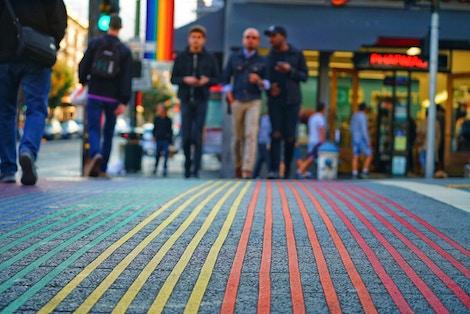“Gayborhoods” are getting more expensive, and the lesbian, gay, bisexual, and transgender community increasingly say they’re getting priced out of the neighborhoods they helped to build.
For example, USA Today reports that areas like San Francisco’s Castro district, which has long been known to house many members of the LGBT community, has seen values reach nearly $1.8 million while comparable homes in other neighborhoods average $1.3 million—a half-million-dollar difference.
“The gayer the block, the faster it rises in value,” Amin Ghaziani, a professor of sociology at the University of British Columbia and author of There Goes the Gayborhood?, told USA Today.
Ghaziani’s research points to an increase in gentrification and rising costs within gayborhoods that are pricing more of the gay community out. His research finds that areas with large populations of gay households tend to have real estate values that are higher than the city’s average. Other real estate studies have also found that gay neighborhoods sometimes have double or triple the home value compared to the surrounding areas.
Many within the LGBT community have reported fearing discrimination in neighborhoods so they may be drawn to urban neighborhoods that are known as being gay-friendly. “LGBT people formed their own enclaves in these areas, building thriving businesses and booming communities,” USA Today reports. “And soon after, [heterosexual] families began moving back to the cities.”
The number of LGBT people living in so-called “gayborhoods” has been dropping, Ghaziani told USA Today. Once the LGBT population leaves due to gentrification, the former “gayborhoods” become less welcoming to LGBT people, according to research by Petra Doan, a Florida State University professor.
“It’s important that we work on all fronts to ensure economic and cultural viability for the LGBTQ+ community," Rebecca Rolfe, SF LGBT Center's executive director, told USA Today. “This includes advocating for strong affordable housing policies ... and direct service programs that break down economic barriers by providing training, economic assistance, or temporary housing options to those most in need.”
Source: “‘Gayborhoods’ Used to be a LGBT Safe Haven. Now, Many LGBT People Have Been Priced Out,” USA Today (June 29, 2019)













